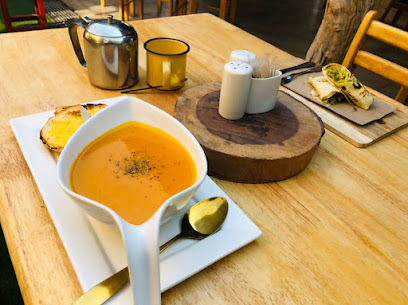
Okavango Delta: Africa's Wetland Paradise
Explore the Okavango Delta, Botswana: a unique inland delta, a UNESCO World Heritage Site, and a haven for diverse wildlife and serene landscapes.
The Okavango Delta, a UNESCO World Heritage Site in Botswana, is a unique inland river delta, a lush oasis in the Kalahari Desert. It offers unparalleled wilderness experiences with diverse wildlife, from elephants and lions to rare birds, in a serene landscape of lagoons, channels, and islands.
A brief summary to Okavango Delta
- BW
Local tips
- The best time to visit for wildlife viewing is during the dry season (May to October) when animals concentrate along the flooded areas.
- Pack lightweight, breathable clothing, comfortable walking shoes, sunscreen, insect repellent, and a hat.
- Consider a mokoro excursion for a traditional and peaceful way to explore the delta's channels.
- Respect wildlife by maintaining a safe distance and following your guide's instructions.
- Bring binoculars and a camera to capture the incredible wildlife and scenic landscapes.
Getting There
-
Air Travel
Most travelers access the Okavango Delta by flying into Maun International Airport (MUB), the gateway to the Delta. From Maun, light aircraft flights are the most common way to reach safari camps and lodges within the Delta. Several airstrips are strategically located throughout the Delta. These flights offer stunning aerial views of the landscape. Prices for flights from Maun to various camps within the Okavango Delta vary depending on the distance and the air charter company. Expect to pay between $260 to $330 per person for a 45-60 minute scenic flight.
-
Ground Transportation
Upon arrival at an airstrip within the Okavango Delta, open-sided safari vehicles typically transport guests to their accommodations. Some camps and lodges may also be accessed by boat, depending on water levels and location. Pony Transport is another option for ground transport, especially in extreme terrain. Transfers by safari vehicle or boat from the airstrip to the camp are usually included in the accommodation package.
-
Entrance Fees
Getting into the Okavango Delta itself doesn't require any sort of entrance fee. However, the Moremi Game Reserve, located in the eastern region of the Okavango, does require entrance fees. The entrance fees for Moremi Game Reserve are structured to accommodate different categories of visitors, including international tourists, SADC (Southern African Development Community) members, and Botswana residents. For adults (18 years and above), the fee is approximately $17.50 per person per day. For children (8-17 years), it's about $8.75 per child per day. Children under 8 enter free of charge.
Discover more about Okavango Delta
Iconic landmarks you can’t miss
Eagle Island Lodge, A Belmond Safari, Botswana
19.2 km
Experience luxury and adventure at Eagle Island Lodge in Botswana's breathtaking Okavango Delta, where nature and comfort meet.

andBeyond Nxabega Okavango Tented Camp
21.7 km
Discover the magical landscapes and wildlife of Botswana at andBeyond Nxabega Okavango Tented Camp, your gateway to an unforgettable safari experience.
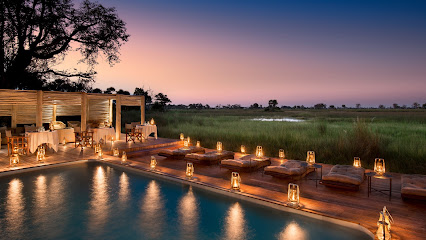
Oddballs' Enclave
23.7 km
Discover the ultimate eco-friendly lodge experience in the heart of the Okavango Delta at Oddballs' Enclave, where nature meets comfort.
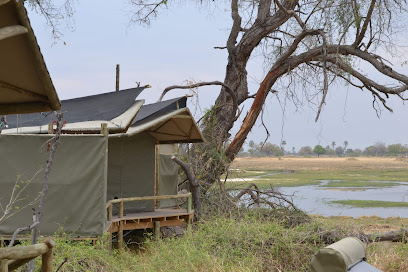
Xigera Safari Lodge
32.5 km
Experience the ultimate luxury and adventure at Xigera Safari Lodge, nestled in Botswana's breathtaking Moremi Game Reserve.
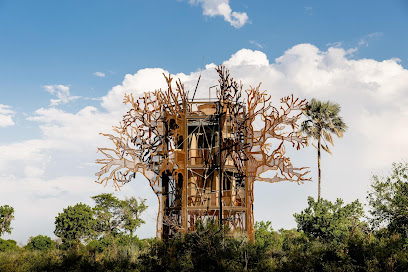
Oddballs Camp
33.5 km
Experience the serene beauty of Oddballs Camp in the Okavango Delta, where adventure meets tranquility in Botswana's wild heart.

Sanctuary Baines Camp
33.5 km
Discover the enchanting Sanctuary Baines Camp, where luxury meets adventure in the pristine Okavango Delta, Botswana's breathtaking wilderness.
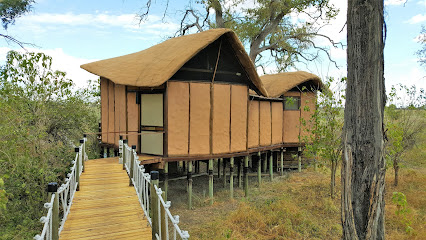
Sanctuary Stanley's Camp
36.5 km
Discover luxury and adventure in the heart of Botswana's Okavango Delta at Sanctuary Stanley's Camp, where wildlife encounters await.

andBeyond Sandibe Okavango Safari Lodge
47.0 km
Discover the luxurious charm of andBeyond Sandibe Okavango Safari Lodge, where the wild beauty of Botswana meets unparalleled comfort and adventure.
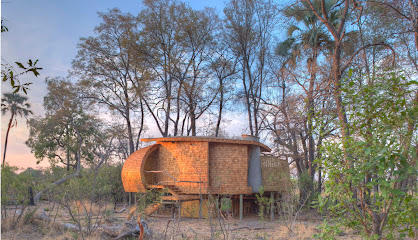
Little Mombo Camp
48.8 km
Experience the ultimate in luxury and wildlife adventure at Little Mombo Camp, located in the breathtaking Okavango Delta.
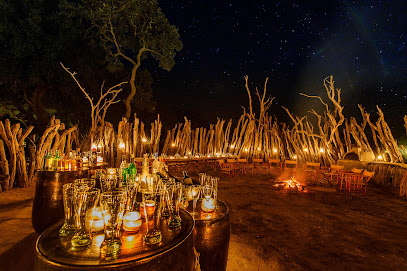
Cha Cha Metsi
50.5 km
Experience the magic of the Okavango Delta at Cha Cha Metsi, a serene campground surrounded by breathtaking wildlife and natural beauty.

Okavango Hidden Gems Camp Maru
56.5 km
Discover the natural beauty and rich wildlife of Botswana at Okavango Hidden Gems Camp Maru, a serene lodge in the heart of the Okavango Delta.
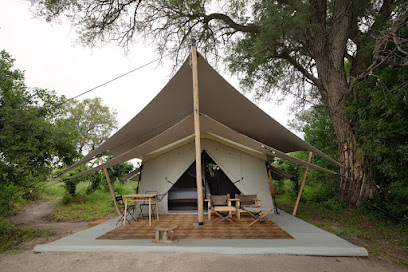
Kwetsani Camp
59.6 km
Experience the breathtaking beauty of the Okavango Delta at Kwetsani Camp, a luxurious lodge offering unforgettable wildlife encounters and eco-friendly hospitality.

Moremi Under Canvas
60.5 km
Discover the ultimate luxury camping experience at Moremi Under Canvas, where the wild beauty of the Okavango Delta meets upscale comforts.

Bush lark Safaris
62.8 km
Explore the breathtaking landscapes and diverse wildlife of Botswana with Bush Lark Safaris, your gateway to the Okavango Delta.
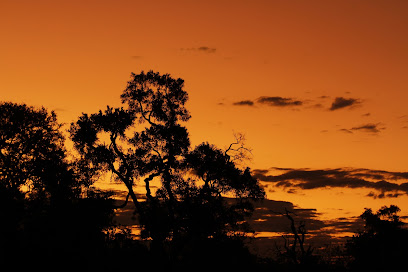
Mboma Island Expeditions
63.6 km
Discover the magic of Botswana at Mboma Island Expeditions, where adventure meets tranquility in the heart of Moremi Game Reserve.
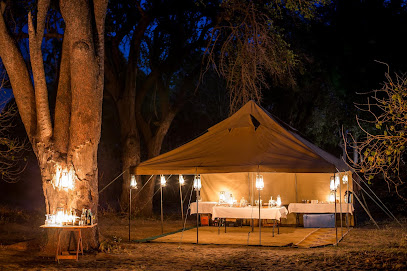
Unmissable attractions to see
Pom Pom Camp
9.9 km
Experience the breathtaking wildlife and serene landscapes of Pom Pom Camp in Botswana’s Okavango Delta, a haven for nature lovers and adventure seekers.
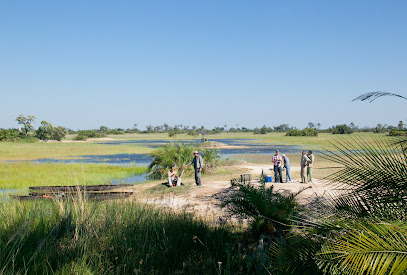
Delta Camp
24.7 km
Discover the enchanting Delta Camp in Botswana's Okavango Delta, where nature and luxury converge for an unforgettable adventure.

Kgori Safaris
30.2 km
Explore the breathtaking wildlife and natural beauty of Kgori Safaris in Ngamiland, South Africa, a premier safari destination for nature enthusiasts.
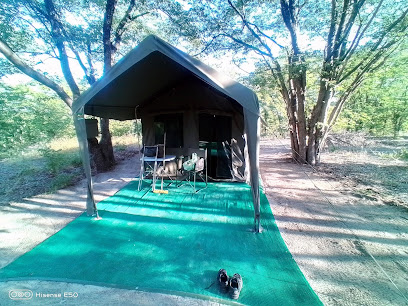
African Horseback Safaris, Macatoo Camp
32.5 km
Discover the breathtaking landscapes of Botswana while experiencing unique horseback safaris at Macatoo Camp in the Okavango Delta.
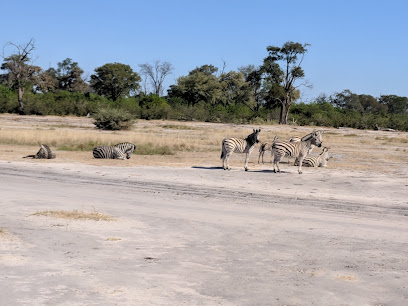
Kwapa Training Camp
34.2 km
Discover the beauty of Botswana's wildlife at Kwapa Training Camp, a serene escape in Mochosens for nature lovers and adventurers.
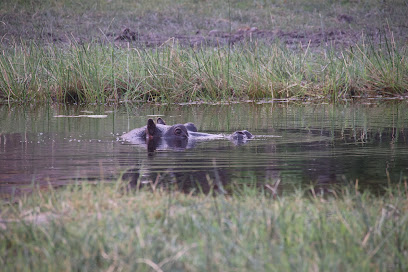
Sanctuary Chief's Camp
39.8 km
Experience the ultimate luxury safari at Sanctuary Chief's Camp, where wildlife encounters and stunning landscapes await in Botswana's Okavango Delta.

KWENE TRAILS
40.5 km
Explore the enchanting Kwene Trails in the Okavango Delta, where wildlife encounters and breathtaking landscapes await every adventurous traveler.
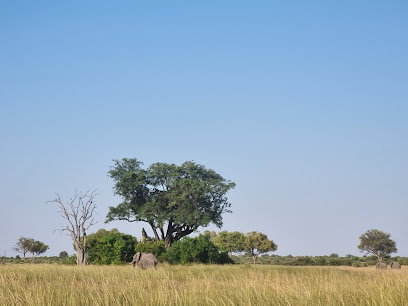
Qorokwe Camp
50.5 km
Discover the breathtaking wildlife and serene landscapes of Qorokwe Camp in Botswana's Okavango Delta, an unforgettable nature adventure awaits.
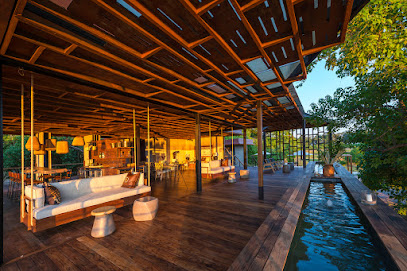
Moremi Game Reserve
51.7 km
Explore the breathtaking landscapes and diverse wildlife of Moremi Game Reserve, a premier destination in Botswana's Okavango Delta.
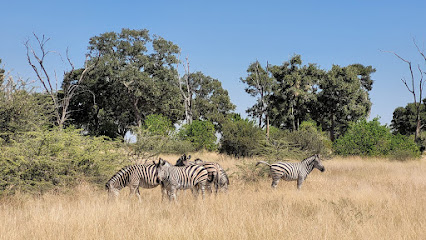
Daunara OKMCT Mokoro Station
60.7 km
Explore the serene beauty of Botswana’s waterways at Daunara OKMCT Mokoro Station, a must-visit destination for nature lovers and adventure seekers.
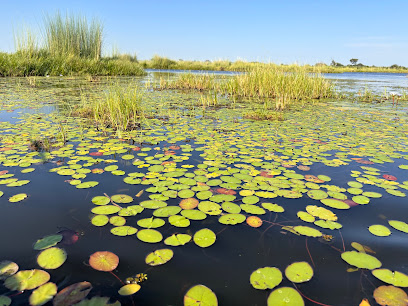
NG/25 (Ngamiland Adventure Safaris)
61.0 km
Discover the wild beauty of Botswana at Ngamiland Adventure Safaris, where unforgettable wildlife encounters await.
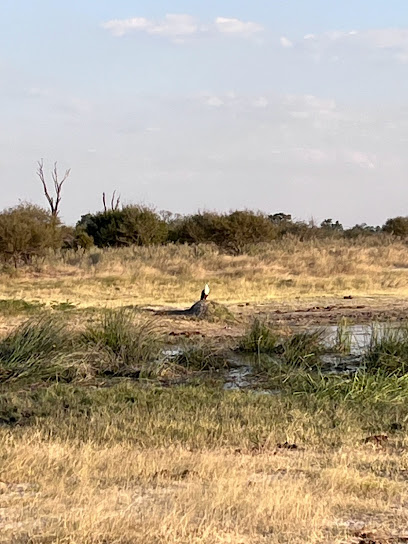
Okavango Delta Safari
61.1 km
Experience the breathtaking beauty and unique wildlife of Botswana's Okavango Delta, a UNESCO World Heritage Site perfect for unforgettable safaris.

OKAVANGO CAMEL RIDES
61.5 km
Explore the stunning Okavango Delta on a memorable camel ride, blending adventure with cultural experiences in Botswana's breathtaking landscapes.
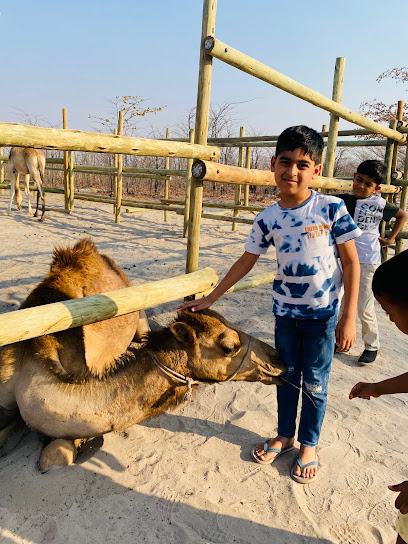
Afrimork Tours Botswana
62.1 km
Experience the breathtaking beauty of Botswana's wildlife at Afrimork Tours Botswana, where every adventure is a journey into nature's heart.
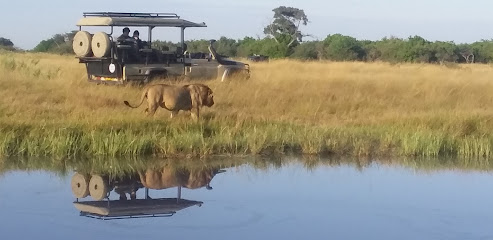
Campboro Safaris
62.2 km
Discover thrilling adventures and serene nature at Campboro Safaris in Maun, Botswana. A perfect blend of camping and outdoor excitement awaits you.
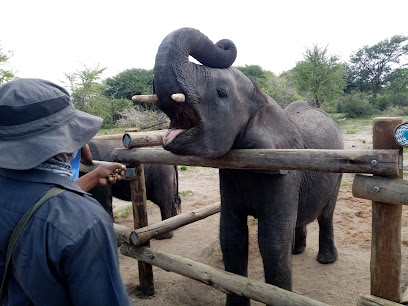
Essential places to dine
Kanana - Ker & Downey Botswana
12.9 km
Discover tranquility at Kanana Lodge in Botswana—where luxury meets nature amidst breathtaking landscapes.
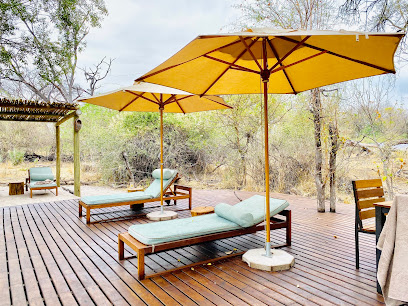
Mombo Camp
49.1 km
Experience unparalleled luxury and immerse yourself in the heart of Botswana's wildlife at Mombo Camp in the Okavango Delta.
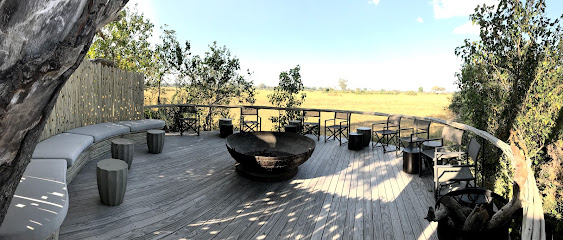
Jao Camp
50.1 km
Experience luxury and adventure at Jao Camp in Botswana's captivating Okavango Delta—perfect for families and wildlife enthusiasts.

Wilderness Chitabe Lediba
51.6 km
Discover luxury in nature at Wilderness Chitabe Lediba in Botswana’s stunning Okavango Delta – perfect for families and wildlife enthusiasts.
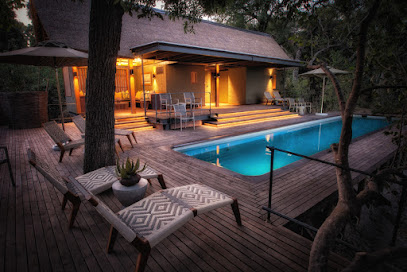
Bell Frog Inn
58.4 km
Discover culinary excellence at Bell Frog Inn in Okavango - where local flavors meet stunning riverside views.
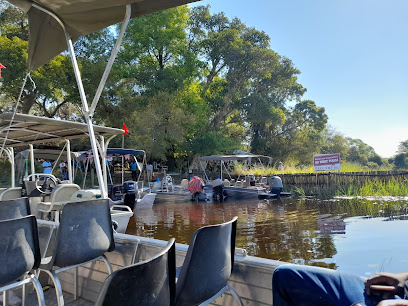
Il Pomodoro Maun/ Poms Beer Garden- Pizzeria
65.0 km
Experience authentic Italian flavors at Il Pomodoro Maun, where delicious pizzas meet a lively beer garden in the heart of Botswana.
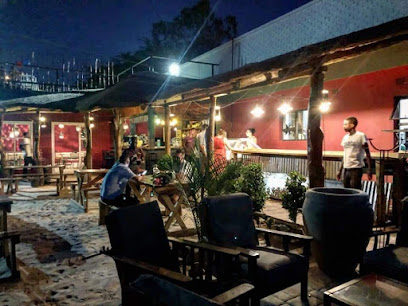
Runway 08
65.3 km
Experience the vibrant flavors of Botswana at Runway 08 - where local cuisine meets modern dining in Maun.
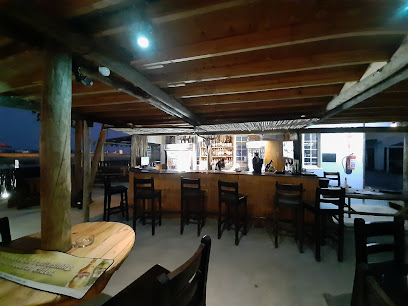
Kwagancinci
65.4 km
Discover the vibrant flavors of Botswana at Kwagancinci - your ultimate food court experience in Maun.
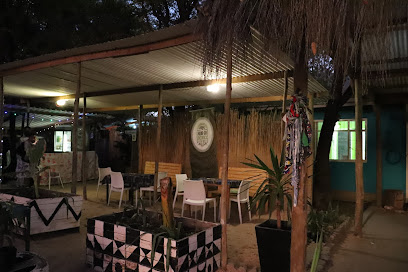
Ko Sedibeng Bar
65.4 km
Discover the flavors of Botswana at Ko Sedibeng Bar – where every bite tells a story amidst vibrant local culture.
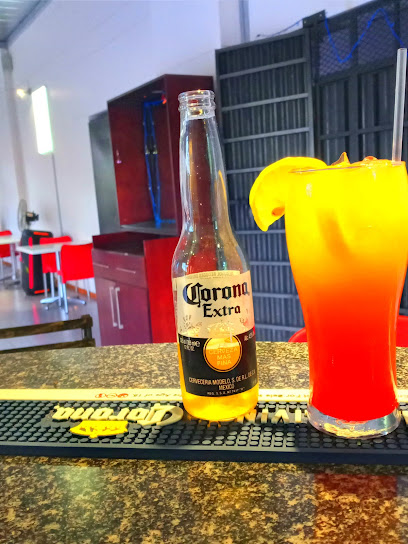
Jiko Airport Cafe
65.5 km
Discover authentic Botswana cuisine at Jiko Airport Cafe in Maun - a perfect stop for travelers seeking delicious local flavors.
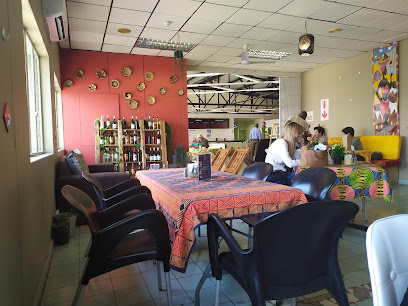
Hilary's Restaurant
65.5 km
Discover the culinary delights of Hilary's Restaurant in Maun - a true taste of Botswana with local flavors and cozy ambiance.
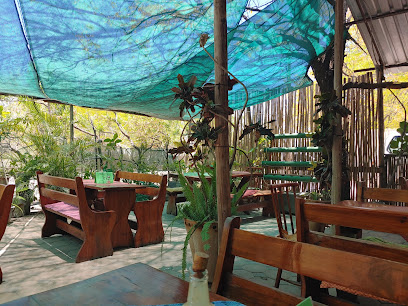
The Duck Café
65.6 km
Discover The Duck Café in Maun - where delicious food meets local culture amidst an artistic ambiance.
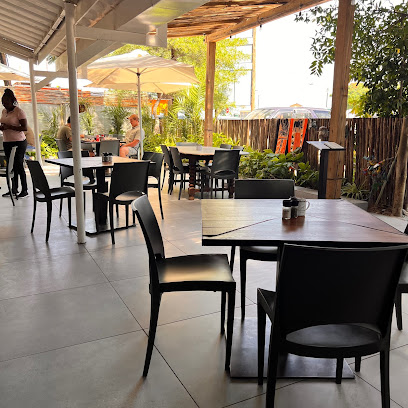
Dusty Donkey Café
65.7 km
Experience delicious meals and warm hospitality at Dusty Donkey Café, located just steps from Maun Airport.
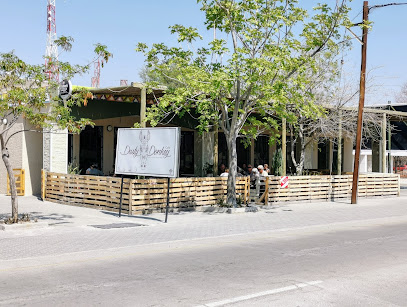
Reeds Restaurant
65.7 km
Experience delicious local and international cuisine at Reeds Restaurant in Maun – where every meal tells a story.
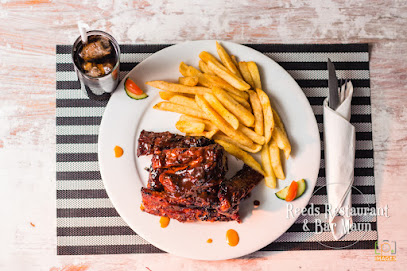
#COC Restaurant Maun
65.7 km
Discover authentic Botswana cuisine at #COC Restaurant in Maun - where every meal tells a story of local flavors.

Markets, malls and hidden boutiques
andBeyond Xaranna Okavango Delta Camp
2.3 km
Immerse yourself in luxury at andBeyond Xaranna Okavango Delta Camp, where adventure meets tranquility in Botswana's enchanting wilderness.
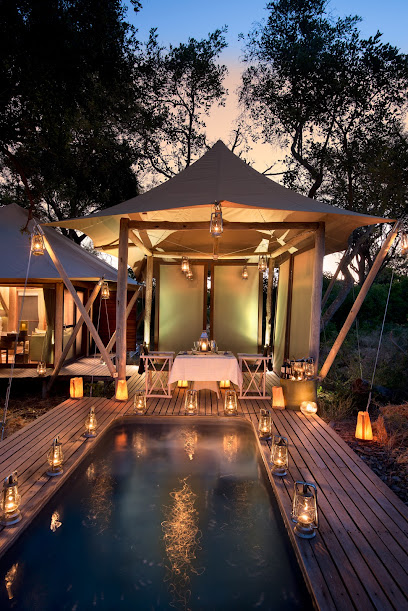
Wilderness Mombo
49.5 km
Discover the luxury of Wilderness Mombo in Botswana's Okavango Delta, where unforgettable wildlife experiences meet exquisite comfort.
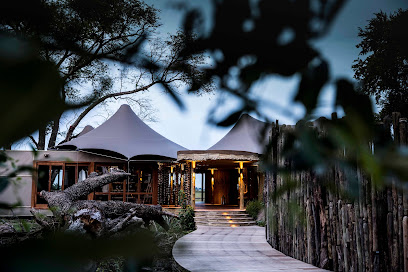
Supreme
65.3 km
Explore the vibrant local culture at Supreme, a shopping gem in Maun offering unique crafts and souvenirs that reflect the heart of Botswana.
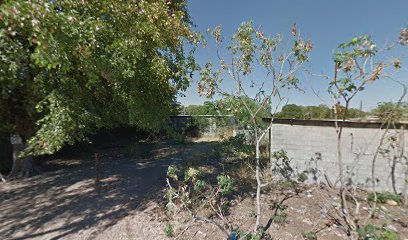
Golden Crown Electronics and Music shop
65.3 km
Explore Maun's musical heritage at Golden Crown Electronics and Music Shop, where local rhythms and instruments await every music lover.
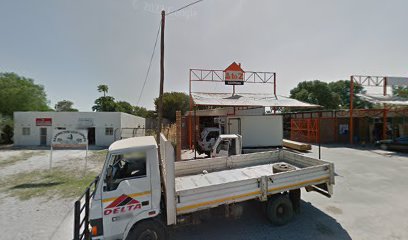
Bino's closet
65.3 km
Explore Bino's Closet in Maun for unique local crafts and fashion that capture the spirit of Botswana in every purchase.
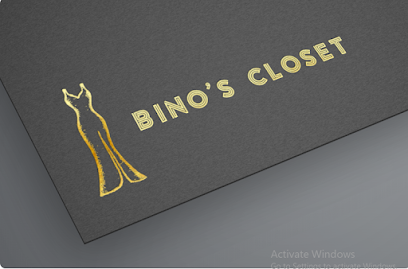
Three Lions Work & Safari Wear
65.3 km
Discover the best safari and work clothing at Three Lions Work & Safari Wear in Maun, perfect for your Botswana adventure.
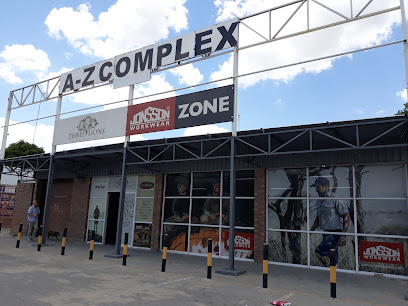
The Power Station Shopping Center
65.4 km
Discover unique shopping experiences and delightful dining at The Power Station Shopping Center in Maun, Botswana's vibrant retail destination.
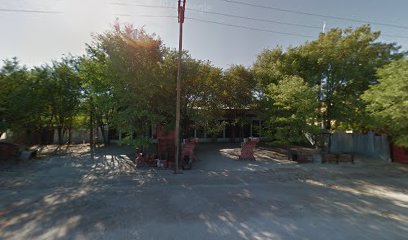
Prestige Botswana
65.4 km
Explore Prestige Botswana for a vibrant selection of local and contemporary clothing in the heart of Maun.
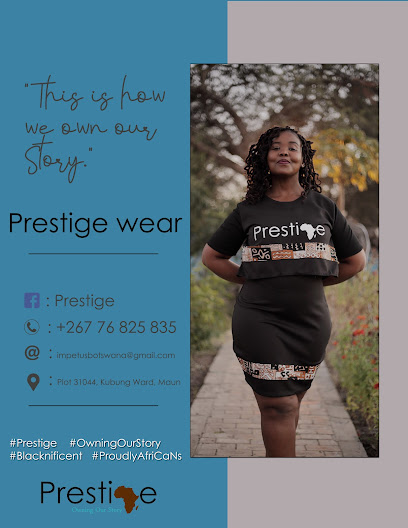
Legae
65.6 km
Experience the vibrant culture of Botswana at Legae Shopping Mall in Maun, offering local crafts, cuisine, and unforgettable shopping.
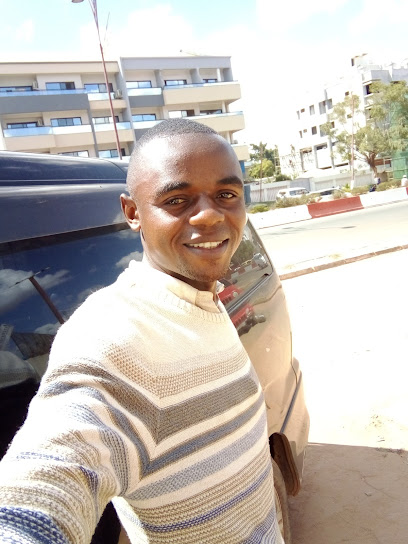
Options
65.7 km
Explore the unique blend of traditional and modern fashion at Options, a premier clothing store in Maun, Botswana, perfect for unforgettable souvenirs.
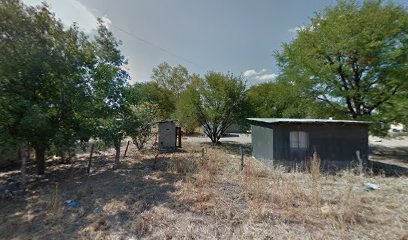
3rd Bridge Tuck Shop
65.7 km
Explore Moremi National Park with ease; visit the 3rd Bridge Tuck Shop for all your essential supplies and refreshments.
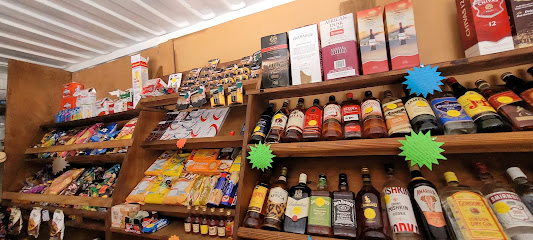
Cool Page Fashions
65.7 km
Discover unique clothing styles at Cool Page Fashions in Maun, where vibrant local culture meets contemporary fashion trends.
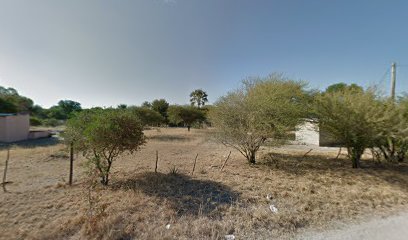
Vixen Excursions (Pty) Ltd
65.7 km
Explore Botswana's beauty with Vixen Excursions, your go-to travel agency for photography and cultural experiences in Maun.
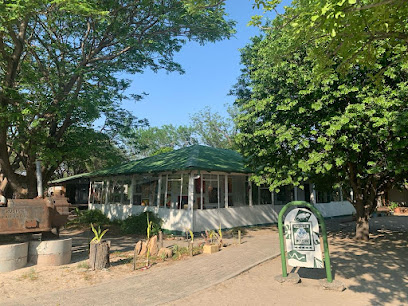
HOMEZONE
65.7 km
Explore HomeZone in Maun for unique home goods that blend local craftsmanship with modern elegance, perfect for enhancing your living space.
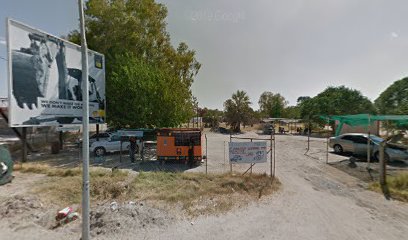
Choppies
65.8 km
Discover the vibrant shopping experience at Choppies, Maun's favorite supermarket for fresh produce and local delicacies.
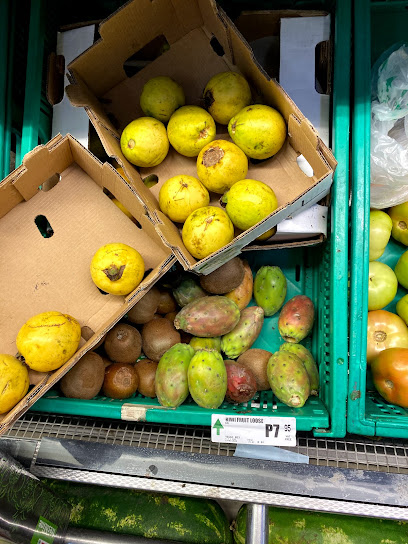
Essential bars & hidden hideouts
DIKGOSHI CHILLAS PUB and kings General Dealer
63.7 km
Discover the lively ambiance and local charm at DIKGOSHI CHILLAS PUB in Maun, a perfect spot for relaxation and socialization.
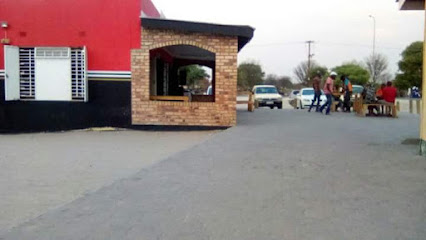
Fortress Square
65.1 km
Experience the vibrant culture and refreshing local beverages at Fortress Square, a must-visit bar in the heart of Maun, Botswana.
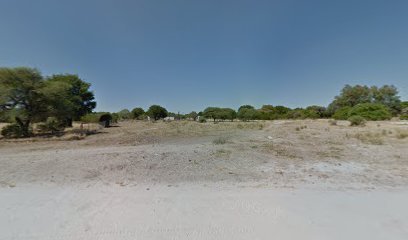
Sahani Bar & Grill
65.6 km
Experience the vibrant flavors of Maun at Sahani Bar & Grill, where local culture meets delicious cuisine in a lively atmosphere.
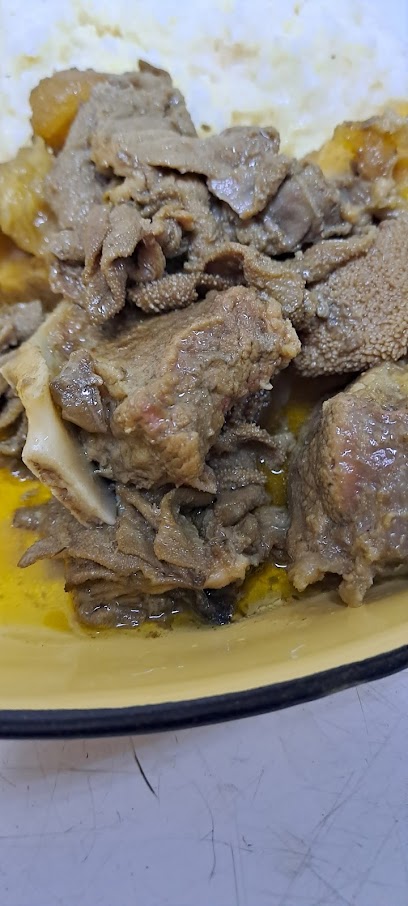
Masters Bar
65.7 km
Experience the lively atmosphere and diverse drink selection at Masters Bar in Maun, a favorite spot for locals and travelers to unwind.
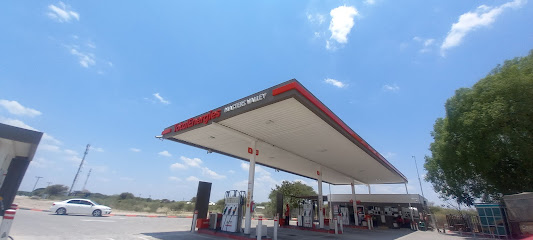
Base Lounge Night Club
65.8 km
Discover the rhythms of Botswana at Base Lounge Night Club, a vibrant destination for nightlife enthusiasts in Maun.
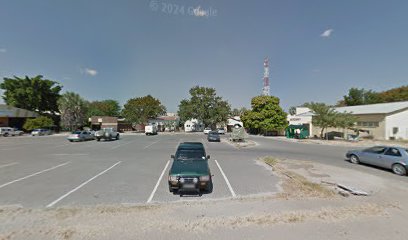
Beach bay
65.8 km
Discover the vibrant atmosphere of Beach Bay in Maun, where relaxation meets lively entertainment and stunning views of the water.
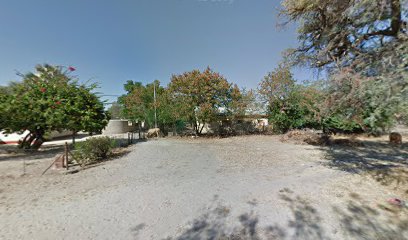
Ponny Bar
66.1 km
Experience the vibrant atmosphere of Ponny Bar in Maun, where good service and great music await every visitor seeking a lively night out.
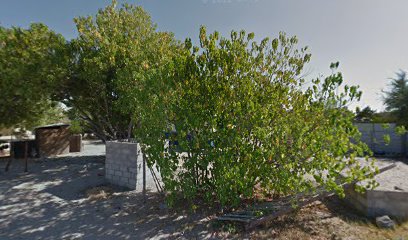
La Vue Restaurant
66.2 km
Discover the vibrant atmosphere and stunning views at La Vue Restaurant, a top bar destination in Maun, Botswana.
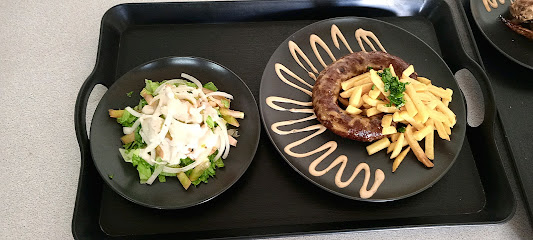
Star bar
66.6 km
Experience the vibrant nightlife of Maun at Star Bar, where friendly vibes and delightful drinks await every traveler.
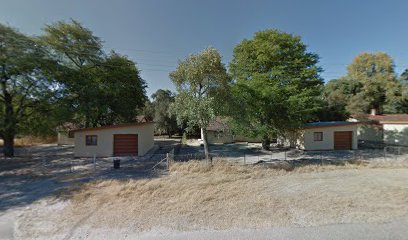
The Boma Restaurant & Riverview Bar
67.3 km
Experience the taste of Botswana at The Boma Restaurant & Riverview Bar, where local flavors meet stunning river views.
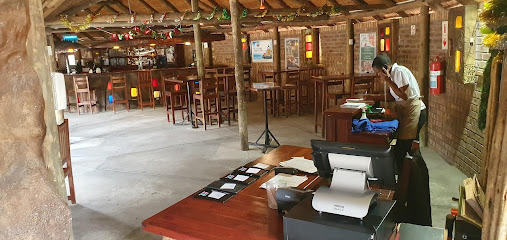
Rainbow Bar
67.5 km
Immerse yourself in the vibrant nightlife of Maun at Rainbow Bar, where locals and travelers come together to enjoy drinks and music.

Black and white pub and grill
67.6 km
Experience the blend of traditional and contemporary flavors at Black and White Pub and Grill in Maun, Botswana's culinary gem.
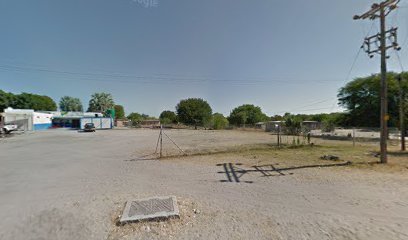
KANANA BAR
67.6 km
Discover the lively Kanana Bar in Maun, where vibrant nightlife meets authentic local culture, perfect for a relaxing evening out.
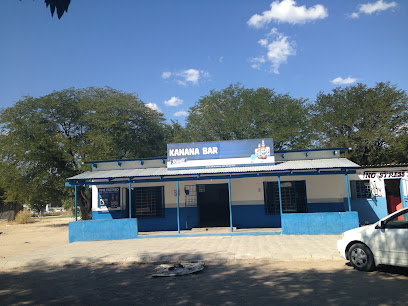
Pub
68.0 km
Discover the vibrant pub scene in Maun, where culture meets comfort and every drink tells a story.
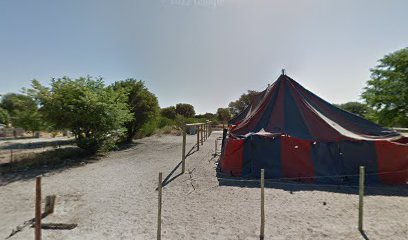
sunset Cafe
68.4 km
Experience the charm of Sunset Cafe in Maun - where local flavors meet stunning sunset views for an unforgettable dining experience.
